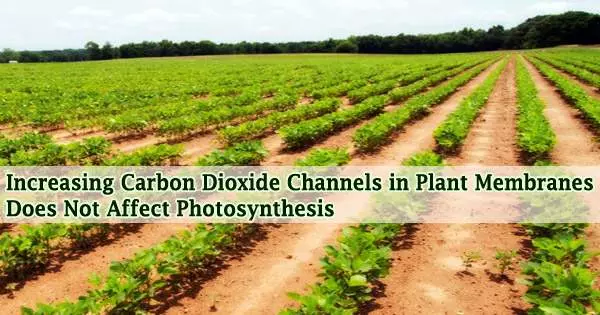In light of climate change and other environmental issues, it has become more and more important to study how to modify photosynthesis in order to increase crop yields and feed an expanding world population.
Researchers from the Australian National University (ANU) recently examined the effects of increasing the number of carbon dioxide channels in plant membranes, but they were unable to find any effect on photosynthesis in model tobacco plants. Their findings were published in the Journal of Experimental Botany.
Carbon dioxide (CO2) must be supplied to the chloroplasts within leaf cells, where the Rubisco enzyme fixes it into sugars, in order for photosynthesis to take place. CO2 must permeate into the leaf and through the leaf mesophyll cells, overcoming obstructions such cell walls and membranes, in order to reach the chloroplast.
Crop yields will increase due to increased CO2 diffusion through mesophyll cells into the chloroplast (referred to as mesophyll conductance), while water use efficiency will also increase.
“Our research targeted the membranes in leaf cells; we wanted to know if we could make CO2 transfer more efficient by adding extra channels for CO2 diffusion into cell membranes,” said RIPE researcher Dr. Tory Clarke, who performed this study at ANU.
The ANU researchers raised the number of aquaporin proteins in the plasma membranes of test tobacco plants in order to target CO2 transfer across plant cell membranes.
Plant growth and environmental conditions may play a significant role in the ability of aquaporins to alter mesophyll conductance. Our study also used computer modeling to predict how changes to membrane CO2 permeability would impact overall mesophyll conductance. We found that in order to improve overall mesophyll conductance by 20%, the amount of CO2 that would need to cross the plant cell membrane would need to double.
Professor Susanne von Caemmerer
Senior author Dr. Michael Groszmann explained, “Aquaporins are membrane channels that can facilitate the movement of molecules such as water and gasses across membranes. Our research confirms that the channels localize in the leaf cell plasma membrane.”
The Plasma-membrane Intrinsic Proteins (PIPs), a subgroup of plant aquaporins, have been shown in prior research to be capable of transferring CO2 in test settings; nevertheless, there have been conflicting reports regarding their function in mesophyll conductance in plants.
“In this study, we were able to introduce more PIP aquaporin channels into the mesophyll cell membrane, but surprisingly this did not detectably increase the conductance of CO2 through the mesophyll cell, with no effect on photosynthetic rates either,” said Clarke.
“Plant growth and environmental conditions may play a significant role in the ability of aquaporins to alter mesophyll conductance,” said Susanne von Caemmerer, a Professor of Molecular Plant Physiology at the Research School of Biology at the ANU, who led this study alongside Groszmann.
“Our study also used computer modeling to predict how changes to membrane CO2 permeability would impact overall mesophyll conductance. We found that in order to improve overall mesophyll conductance by 20%, the amount of CO2 that would need to cross the plant cell membrane would need to double.”
Although this study did not result in improved photosynthesis, it did increase our knowledge of how CO2 moves from the atmosphere to chloroplasts.
“Taking what we’ve learned in this study, we can now focus our work on gaining a better understanding of aquaporin function and how we can improve mesophyll conductance and photosynthesis,” said Groszmann.
















